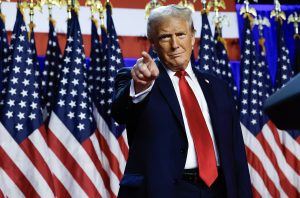No credits, no deductions and a flat income tax rate describes the ideal tax regime ranked first by corporate tax professionals, according to EY's yearly survey recently announced at Ernst & Young LLP's 12th Annual Domestic Tax Conference in New York.
In this year of potential tax reform and changes to economic policy, 34% of survey respondents names the flat tax as their top preference among five different hypothetical regimes. The second favorite, chosen by 22% of respondents, was a value-added tax (VAT) to balance lower income or fewer indirect taxes.
| Ideal Regime | |
| #1 | Flat income tax rate without credits or deductions |
| #2 | Traditional VAT to balance lower income or fewer indirect taxes |
| #3 | Border adjustments to balance lower income or fewer indirect taxes |
| #4 | No separate taxes of any sort |
| #5 | Higher state taxes to cover entitlements with less federal involvement |
The divisive border adjustment tax came in third as an ideal regime, very closely behind VAT. That said, it was also a regime that frequently ranked lowest among the options. Twenty-nine percent of respondents ranked border adjustments fifth out of five options. By comparison, VAT was only ranked last by 11% of respondents.
"Regardless of the fate and style of comprehensive tax reform, tax professionals do anticipate tremendous change in tax credits and incentives," said Kate Barton, EY Americas Vice Chair of Tax Services. "Among survey respondents, only 39% believe jobs-related incentives will be continued throughout the Trump term and just 29% expect repatriation and research benefits to last through his term."
State Forecasts
Survey respondents forecast state-by-state confusion following federal tax reform, with more than half (58%) expecting a patchwork of changes to adjust. Another 27% believe states will leave their policies as status quo until new federal policies have started affecting them and 15% expect states to follow with wholesale tax reform.
"Once federal tax reform is enacted, be ready for the state-tax rebound," said Barton. "They will at least need to patch and adjust according to the effect on their coffers."
Preparation and Expectations
Tax professionals are divided into three buckets when it comes to staff and technology needed in the face of tax reform.
- More than one third (36%) anticipates needing all hands on deck if/when comprehensive tax reform policies are enacted, as they will need to rethink and manage the impact on the entire organization's structure.
- The same sized group says it is prepared with modeling and has the staff and technology to manage changes.
- The last 27% is not ready: 13% say they will not be able to revamp systems without at least 2-year rollouts of any new tax policies. The remaining 14% expects to have a team in place to update systems and technology by 2018.
In preparation for tax reform, 29% of respondents are already investing as much or more time than last year on activities such as modeling and educating policymakers. Almost 40% of organizations are investing in new tax management technology (18%) or new enterprise-wide systems that make the tax function more efficient (22%), but the majority (61%) has not invested significantly in technology yet.
"One of the most valuable reasons to gather for this year's conference is to hear the latest in technological advances by businesses and tax authorities," said Kate Barton. "We discuss the advantages of new technology – despite the disruption – with clients every day, whether we talk about blockchain, robotics or artificial intelligence. Our interactive Tax Tech Tank session features several entrepreneurs who will pitch a panel of EY judges on the latest and greatest technology being used to solve today's tax problems."
Ties to the Economy
Because tax reform decisions can impact other economic indicators, the survey asked about preferences of tax professionals on the economy. More than three quarters (79%) would prefer that the underlying economy grow through 2017 rather than the stock market continue to strengthen.
The conference guest speaker, Dr. Susan Athey, Economics of Technology Professor at the Stanford Institute for Economic Policy Research, highlighted the connection of tax and the economy to innovation and disruptive technology in business.
(Source: EY)




















